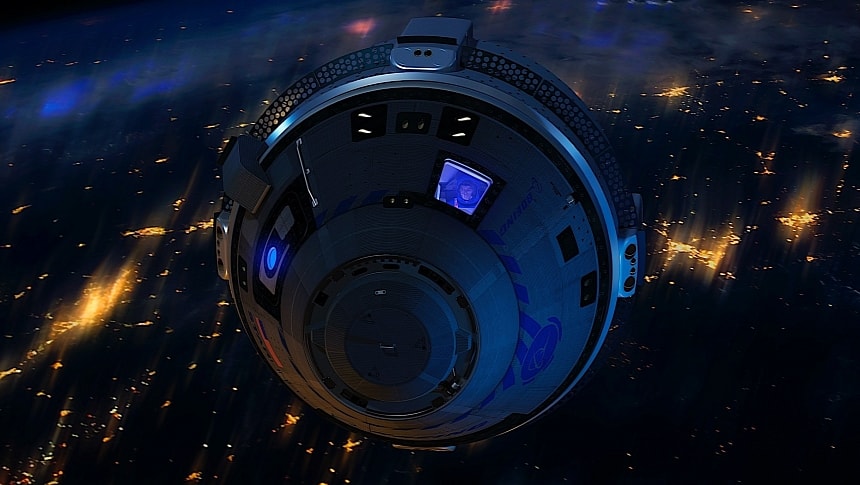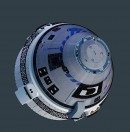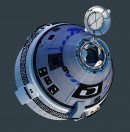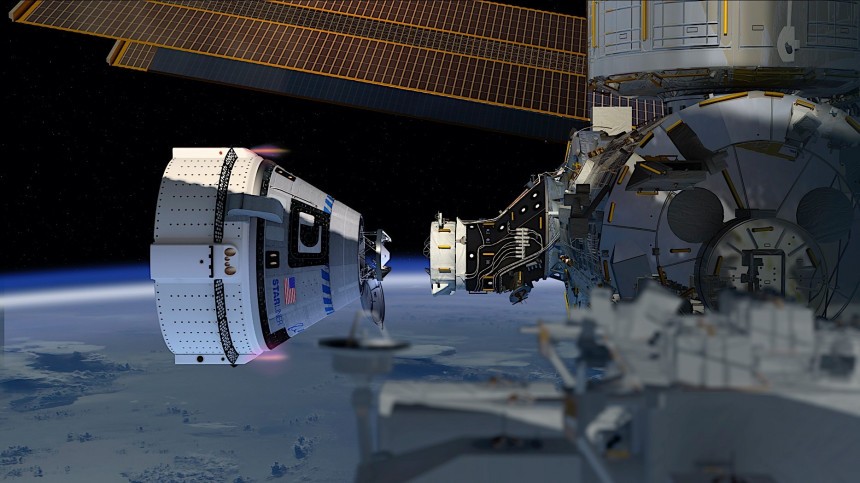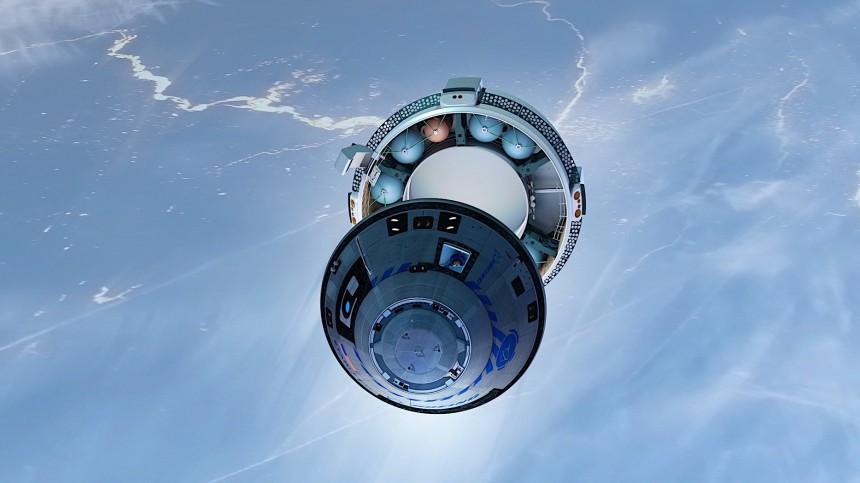And here goes another failed attempt at launching the SpaceX Crew Dragon-rivaling Starliner spacecraft. For what it's worth, though, this time it was not something Boeing did (or didn't do), but a fault with the spacecraft's launch rocket.
The American-made space capsule has been trying to get itself off the ground with people on board for ages, it seems. Developed roughly at the same time as the Crew Dragon, the Boeing ship was supposed to fly more or less in tandem with the SpaceX design, giving America not one, but two crew-rated spacecraft for flight into orbit. Only it failed, repeatedly.
Starliner has seen what space is like twice before. In 2019, during the first test flight of the hardware, the ship did reach orbit and it was making its way toward the International Space Station (ISS). An issue with the spaceship's mission clock led to an 11-hour offset which in turn led to a lot more fuel than needed being burned.
That prevented the Starliner from docking, and the ship had to turn back to Earth, where it nailed a perfect airbag landing at the White Sands Space Harbor in New Mexico.
The partial success of the first test flight was supposed to be continued with a second, uncrewed mission. Boeing and NASA made a number of attempts in 2021 to get the Starliner off the ground once more, but a series of software and hardware issues prevented that from happening.
Success came in 2022, when the spacecraft launched flawlessly and managed to reach its intended target in orbit, the ISS. It stayed up there for six days, coming down at the end of its journey for yet another perfect landing at the White Sands Missile Range.
The mission effectively opened the doors for the first crewed flight of the spacecraft, and that was supposed to take place at the beginning of this week. That, obviously, didn't happen, but at least this time, unlike in the previous occasions, it wasn't really Boeing’s fault.
The Starliner was supposed to fly to space with astronauts Butch Wilmore and Suni Williams on board, taking off from the Space Launch Complex-41 at Cape Canaveral Space Force Station in Florida. The carrier rocket for the mission is a United Launch Alliance Atlas V, and it is this piece of hardware that prevented the launch from going forward.
The exact reasons for the mission's scrubbing are not official yet, but the parties involved did point to a buzzing sound that didn't feel quite right. The mission was canceled about two hours before the countdown was supposed to reach zero.
The buzzing occurred on the rocket's second stage, right where the Starliner is attached. It's a sound NASA engineers know very well, as it's caused by a pressure regulation valve in the liquid oxygen tank as it opens and closes rapidly. It's not something that usually gets in the way of a launch, but in this case, it was so intense that it caused concerns that the valve might fail.
As per initial info, rocket scientists will spend the next day or so troubleshooting the issue in a bid to determine if the valve needs to be replaced. If that's the case, the rocket and the spacecraft it carries will have to be removed from the launch pad. And that, naturally, will translate into a significant delay for the mission.
At the time of writing there is no info on when the crewed Starliner mission will be rescheduled, but we are told the next window won't open until Friday, May 10.
Boeing's Starliner is also referred to as the Crew Space Transportation (CST)-100. Just like the Crew Dragon, it was designed to give Americans easier and cheaper access to space. And quite a lot of Americans, as the thing is quite roomy.
Although the first crewed mission will only carry two people to the ISS, the spacecraft can accommodate up to seven people, but fewer if cargo or some scientific experiments need to be hauled up there.
Being a spacecraft of its time, the hardware has been designed to offer its occupants wireless internet and uses tablets for some of the crew interfaces.
The capsule is reusable, making it ideal for repeated launches. It does have a bit of a downside, though, as Boeing says it needs about half a year to turn around the weldless structure that forms the capsule.
If the first crewed mission of the Starliner does manage to take off sometime soon, NASA plans to use the hardware extensively over the coming years, with Boeing cutting into SpaceX's cake. No less than six operational flights are planned until the end of the decade.
This is a developing story and that means we will keep an eye out for new bits of info as events unfold, and update you accordingly.
Starliner has seen what space is like twice before. In 2019, during the first test flight of the hardware, the ship did reach orbit and it was making its way toward the International Space Station (ISS). An issue with the spaceship's mission clock led to an 11-hour offset which in turn led to a lot more fuel than needed being burned.
That prevented the Starliner from docking, and the ship had to turn back to Earth, where it nailed a perfect airbag landing at the White Sands Space Harbor in New Mexico.
The partial success of the first test flight was supposed to be continued with a second, uncrewed mission. Boeing and NASA made a number of attempts in 2021 to get the Starliner off the ground once more, but a series of software and hardware issues prevented that from happening.
Success came in 2022, when the spacecraft launched flawlessly and managed to reach its intended target in orbit, the ISS. It stayed up there for six days, coming down at the end of its journey for yet another perfect landing at the White Sands Missile Range.
The Starliner was supposed to fly to space with astronauts Butch Wilmore and Suni Williams on board, taking off from the Space Launch Complex-41 at Cape Canaveral Space Force Station in Florida. The carrier rocket for the mission is a United Launch Alliance Atlas V, and it is this piece of hardware that prevented the launch from going forward.
The exact reasons for the mission's scrubbing are not official yet, but the parties involved did point to a buzzing sound that didn't feel quite right. The mission was canceled about two hours before the countdown was supposed to reach zero.
The buzzing occurred on the rocket's second stage, right where the Starliner is attached. It's a sound NASA engineers know very well, as it's caused by a pressure regulation valve in the liquid oxygen tank as it opens and closes rapidly. It's not something that usually gets in the way of a launch, but in this case, it was so intense that it caused concerns that the valve might fail.
As per initial info, rocket scientists will spend the next day or so troubleshooting the issue in a bid to determine if the valve needs to be replaced. If that's the case, the rocket and the spacecraft it carries will have to be removed from the launch pad. And that, naturally, will translate into a significant delay for the mission.
At the time of writing there is no info on when the crewed Starliner mission will be rescheduled, but we are told the next window won't open until Friday, May 10.
Although the first crewed mission will only carry two people to the ISS, the spacecraft can accommodate up to seven people, but fewer if cargo or some scientific experiments need to be hauled up there.
Being a spacecraft of its time, the hardware has been designed to offer its occupants wireless internet and uses tablets for some of the crew interfaces.
The capsule is reusable, making it ideal for repeated launches. It does have a bit of a downside, though, as Boeing says it needs about half a year to turn around the weldless structure that forms the capsule.
If the first crewed mission of the Starliner does manage to take off sometime soon, NASA plans to use the hardware extensively over the coming years, with Boeing cutting into SpaceX's cake. No less than six operational flights are planned until the end of the decade.
This is a developing story and that means we will keep an eye out for new bits of info as events unfold, and update you accordingly.
